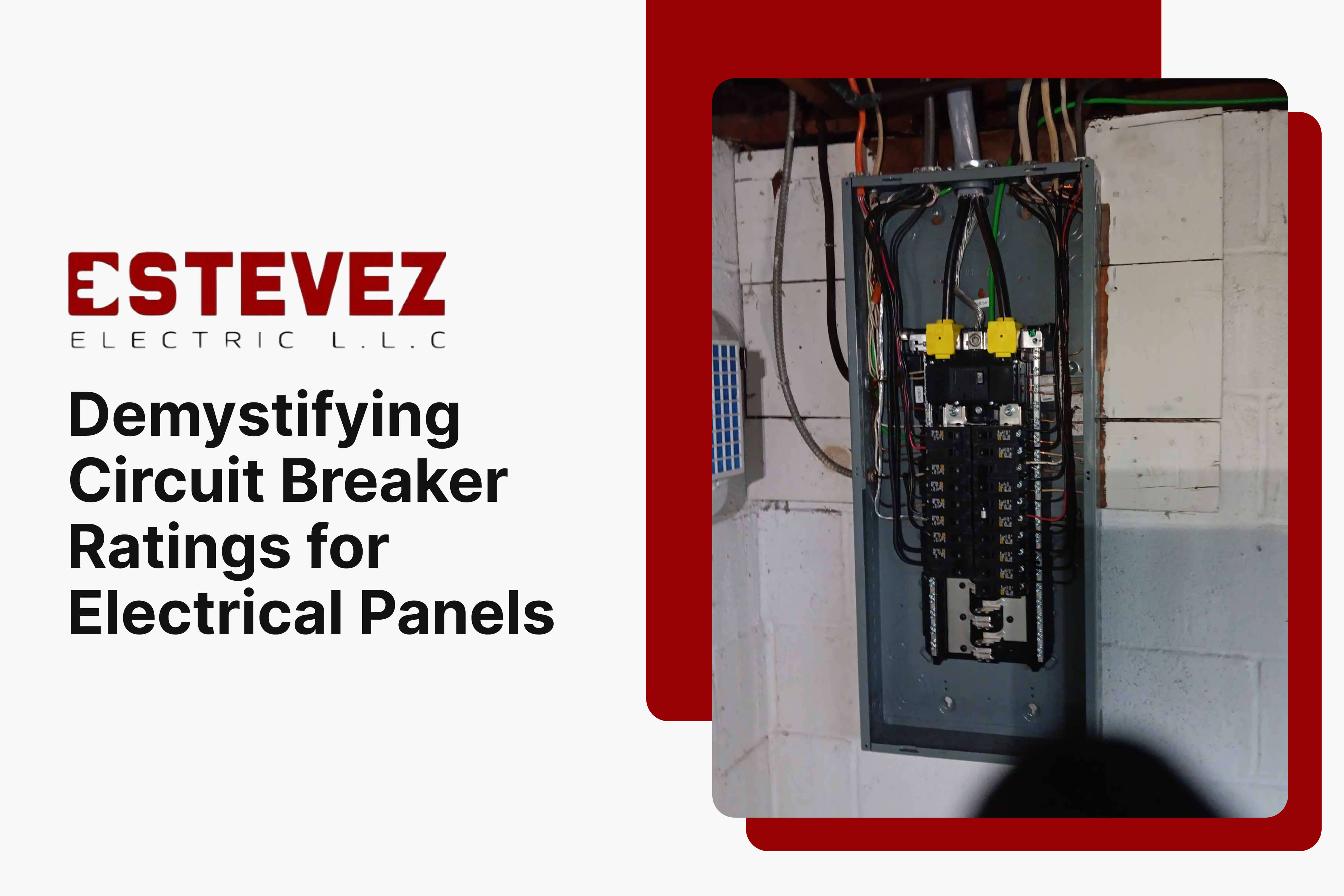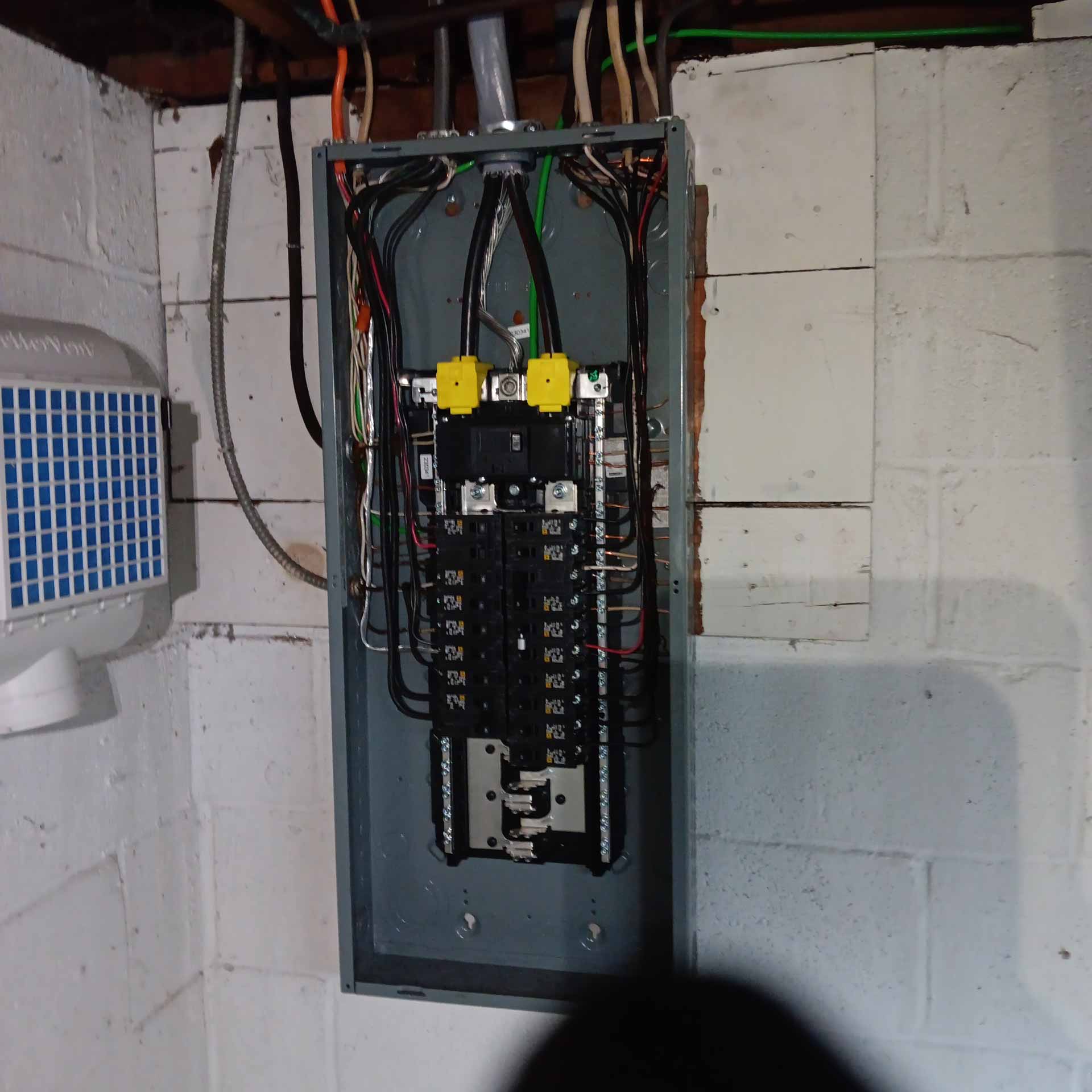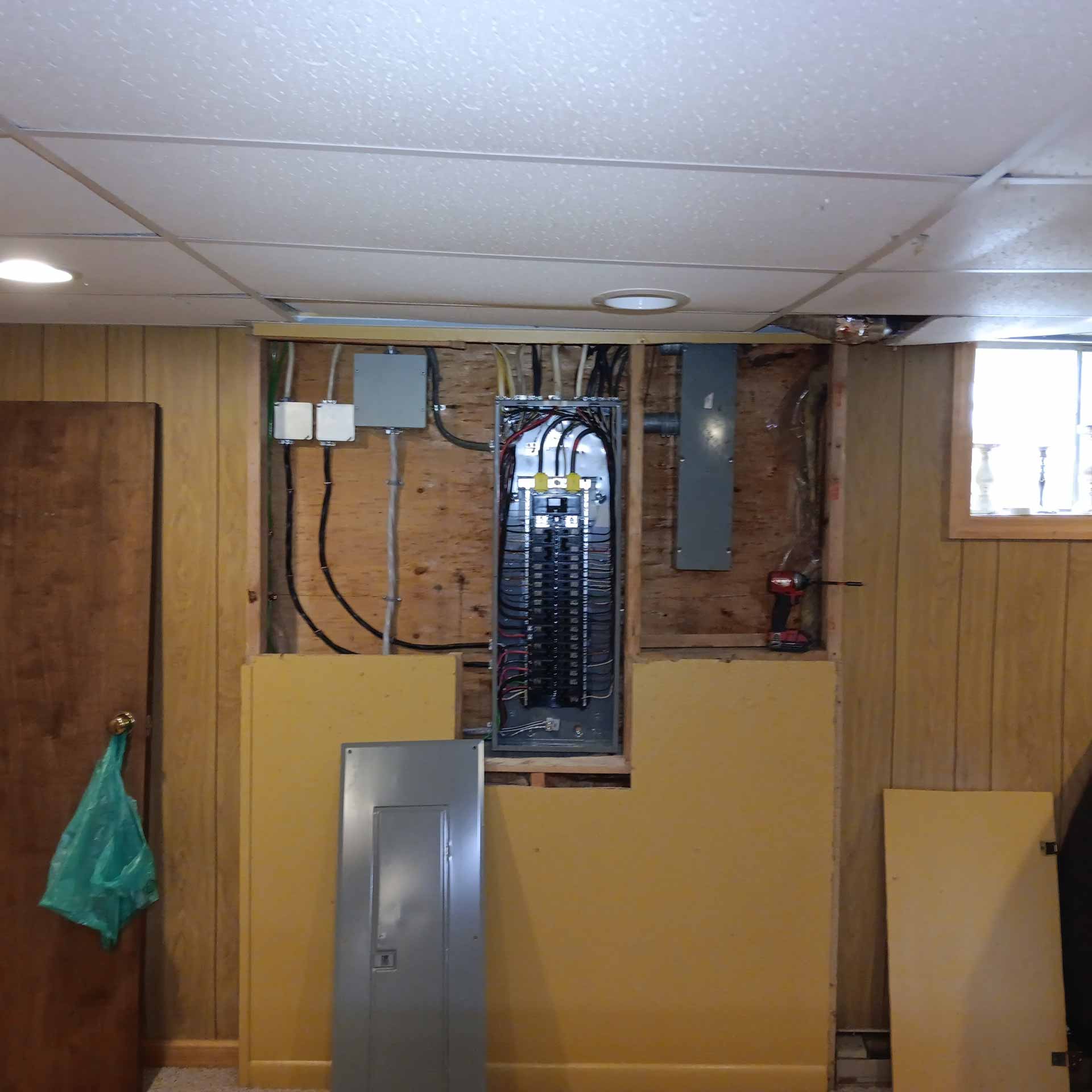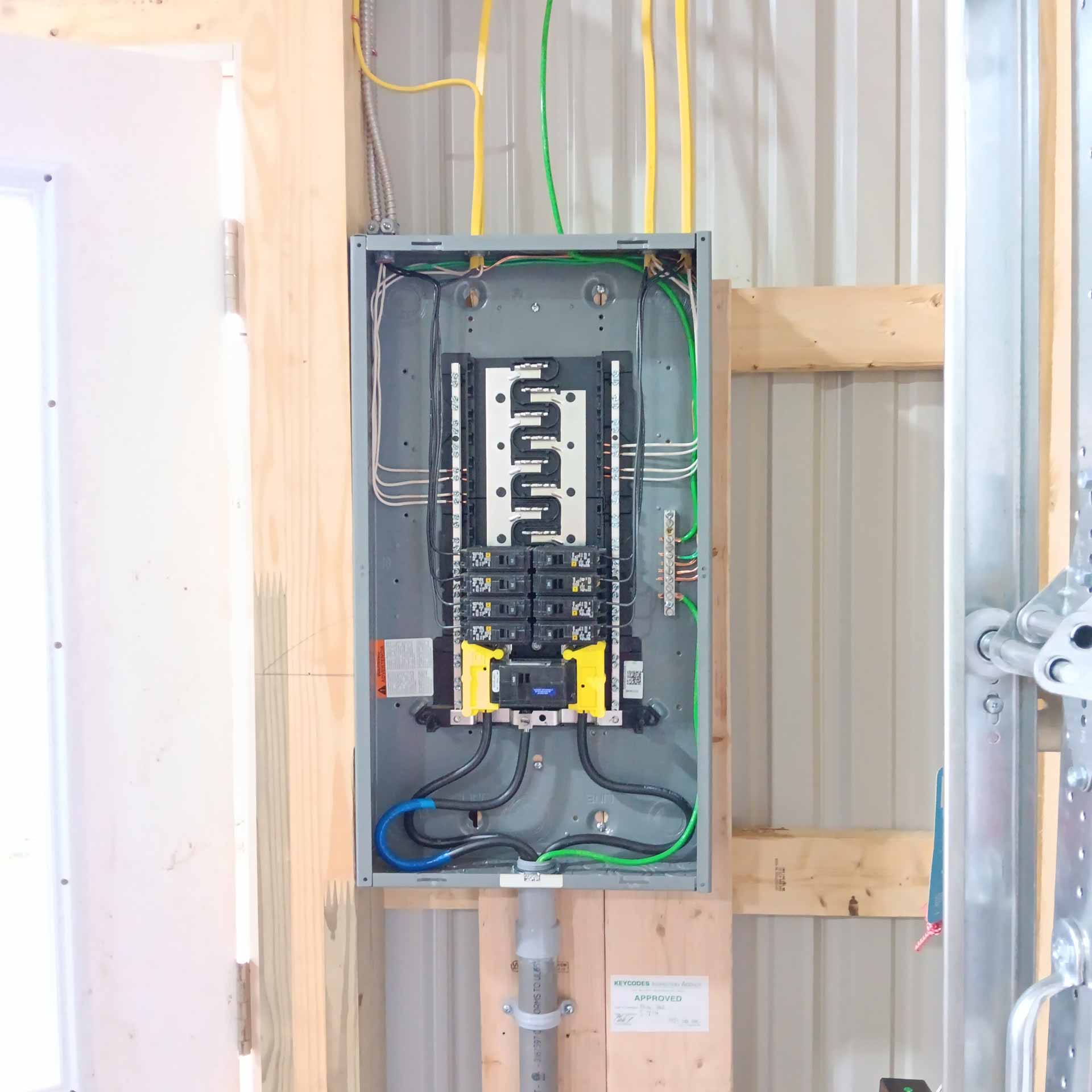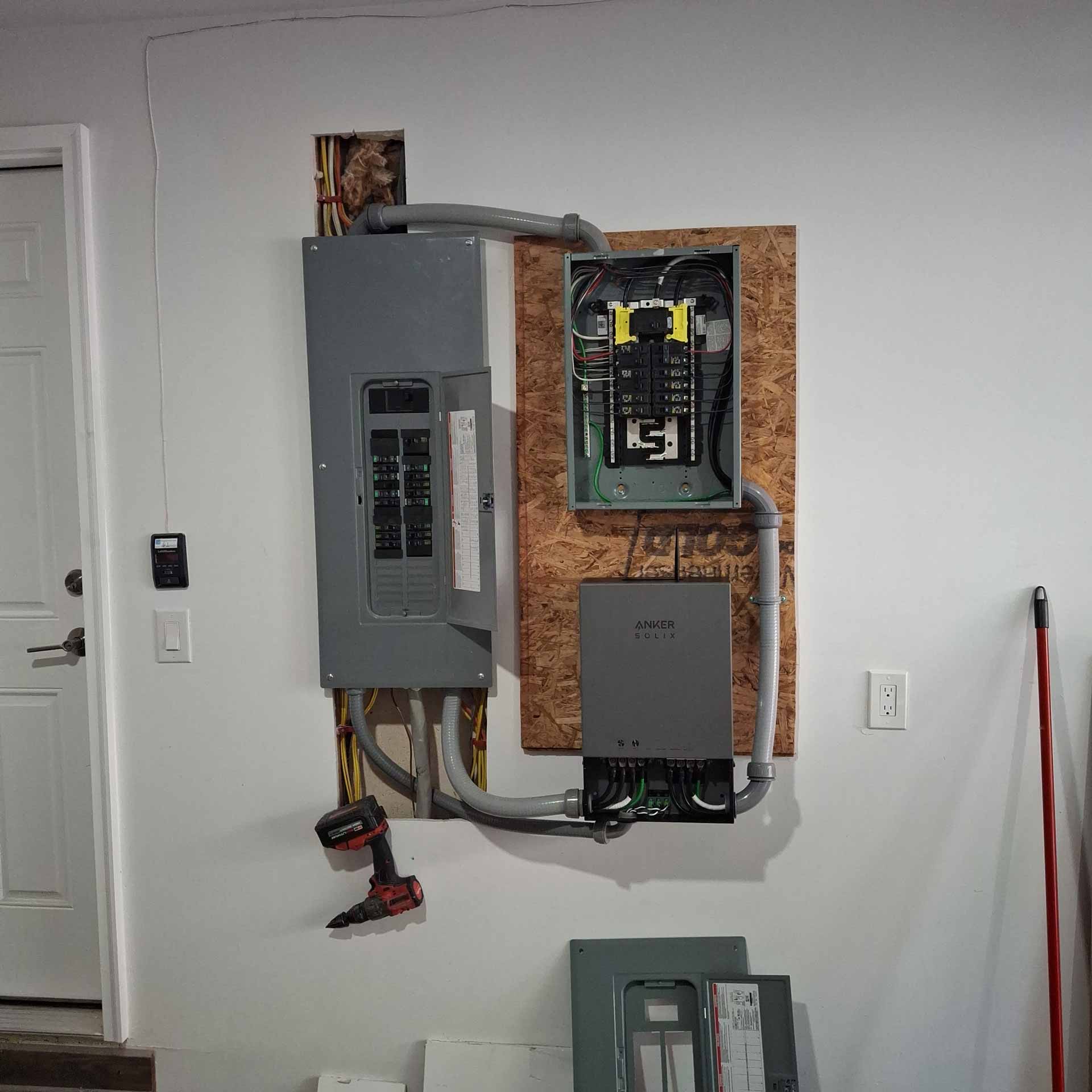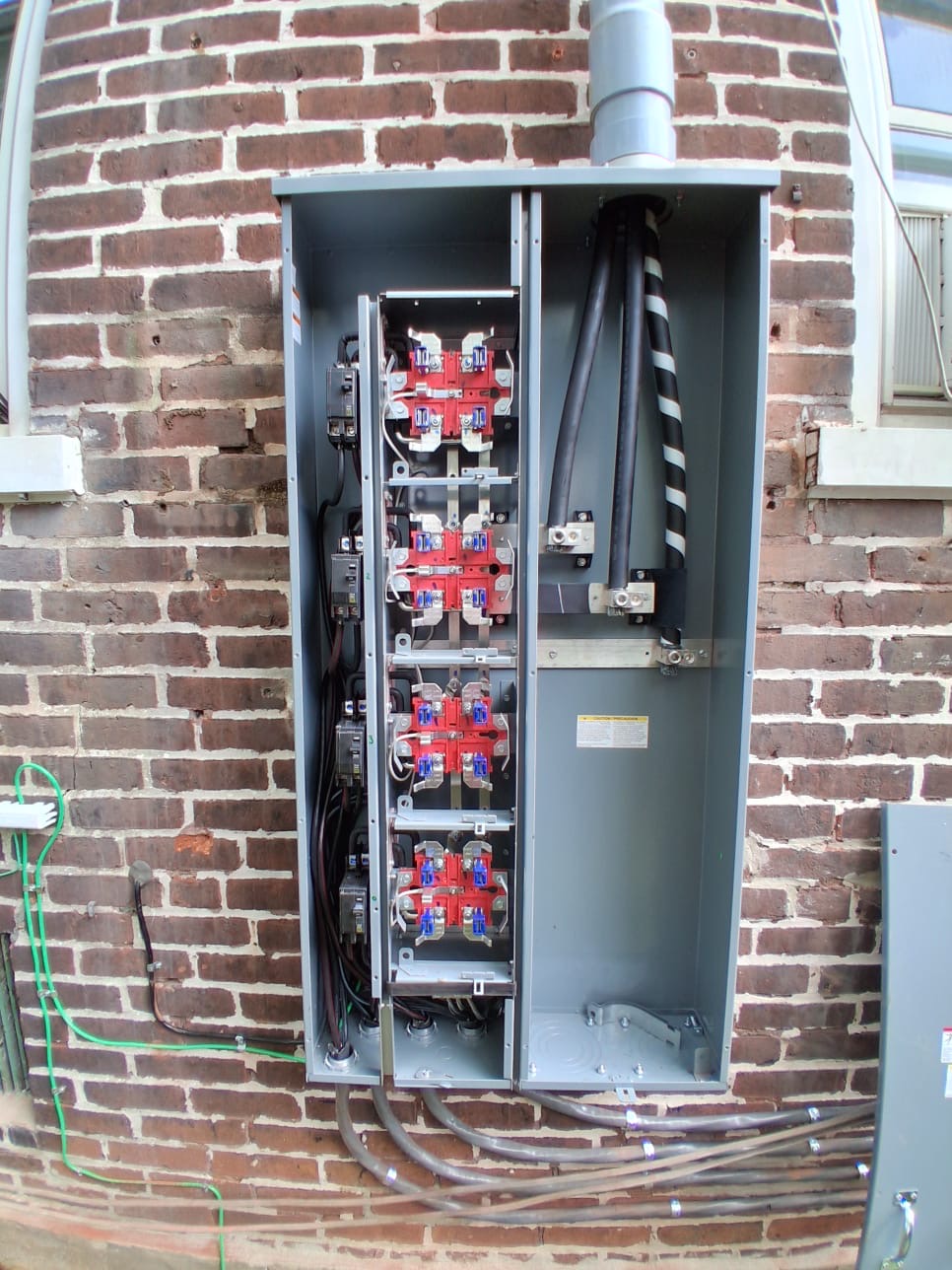Understanding circuit breaker ratings is crucial for maintaining a safe and efficient electrical system in your home or business. At Estevez Electric LLC, we’re committed to helping you make informed decisions about your electrical panel. These ratings are critical safeguards that protect your property and loved ones from potential electrical hazards.
Key Takeaways
- Circuit breaker ratings include voltage, current (amperage), and interrupting capacity
- Proper ratings are essential for preventing electrical fires and equipment damage
- Different types of breakers (standard, GFCI, AFCI) have specific ratings for various applications
- Regular inspections and professional installation are crucial for electrical safety
- Upgrading your electrical panel may be necessary to meet modern power demands
What Are Circuit Breaker Ratings?
Circuit breaker ratings are like the speed limits for your home’s electrical highways. They tell us how much electrical current a breaker can safely handle before it needs to shut off the power. These ratings are super important because they keep your wires from getting too hot and potentially starting a fire. AFCI breakers are a special type that can detect dangerous arcing faults, adding an extra layer of protection. Understanding these ratings is essential for homeowners and businesses alike, as they directly impact the safety and functionality of your electrical system.
Circuit breaker ratings are determined through rigorous testing and adhere to strict industry standards. They take into account factors such as the breaker’s ability to withstand repeated use, its performance under various environmental conditions, and its capacity to interrupt fault currents quickly and safely. These ratings are not arbitrary; they are the result of extensive research and engineering to ensure electrical safety in our homes and workplaces.
Types of Circuit Breaker Ratings
There are three main types of ratings you’ll see on circuit breakers:
Key Circuit Breaker Ratings
- Voltage Rating: The maximum voltage the breaker can safely handle
- Current Rating (Amperage): The amount of current the breaker can safely carry
- Interrupting Rating: The maximum fault current the breaker can safely interrupt
- Trip Curve: Defines how quickly the breaker responds to various overload conditions
- Maximum Interrupting Capacity: The highest short-circuit current the breaker can safely stop
Each of these ratings plays a crucial role in ensuring the safety and efficiency of your electrical system. The voltage rating ensures the breaker can handle the electrical pressure in your system, while the current rating determines how much electricity can flow through it safely. The interrupting rating is particularly important for safety, as it indicates the breaker’s ability to stop dangerous levels of current during a fault condition.
Understanding Voltage Ratings
Voltage ratings tell us how much electrical pressure a breaker can handle. In most homes, you’ll see breakers rated for 120 volts or 240 volts. It’s like choosing the right strength of hose for your water pressure – you need a breaker that can handle the voltage in your system without bursting. If you’re considering a 200 amp service upgrade, you’ll need breakers with the right voltage rating to match.
Understanding voltage ratings is crucial for several reasons. Firstly, using a breaker with too low a voltage rating can result in the breaker failing to protect the circuit adequately. Conversely, a breaker with an unnecessarily high voltage rating may be more expensive and bulky than needed. Proper voltage ratings ensure that the breaker can safely interrupt the circuit under normal operating conditions and during fault scenarios.
Key Points
- Circuit breakers protect electrical circuits from damage caused by overloads and short circuits
- The global power circuit breaker market is valued at $3.4 billion
- Circuit breakers are classified by voltage: low (typically used in homes), medium (1,000 to 72,000 volts), and high (above 72,000 volts)
- Standard household circuits are typically rated for 15-20 amps
- Circuit breakers should only handle 80% of their maximum amperage for safety
- Regular maintenance and inspection of circuit breakers is crucial for electrical safety
Current Ratings: Amperage and Its Significance
The amperage rating of a circuit breaker is super important. It tells you how much current can safely flow through the breaker before it trips. Common ratings for home circuits are 15, 20, and 30 amps. Using a breaker with too high an amperage rating can be dangerous – it’s like using a fire hose to water a small plant! When upgrading your electrical panel, choosing the right amperage for each circuit is crucial.
The amperage rating is directly related to the size and type of wire used in the circuit. For example, a 15-amp circuit typically uses 14-gauge wire, while a 20-amp circuit requires 12-gauge wire. Using the correct amperage rating ensures that the breaker will trip before the wire overheats, preventing potential fire hazards. It’s also important to note that continuous loads should not exceed 80% of the breaker’s rating to provide a safety margin and comply with electrical codes.
Interrupting Capacity: Ensuring Safety During Faults
The interrupting capacity is like a circuit breaker’s superpower. It’s the maximum amount of fault current a breaker can safely stop. This is super important for preventing electrical fires and explosions. Understanding circuit overloads helps you appreciate why this rating matters so much for your safety.
The interrupting capacity is measured in kiloamps (kA) and can vary widely depending on the breaker’s design and intended application. For residential use, breakers typically have an interrupting capacity between 10kA and 22kA. In industrial settings, where potential fault currents can be much higher, breakers may need interrupting capacities of 65kA or more. It’s crucial to match the breaker’s interrupting capacity to the potential fault current at its location in the electrical system to ensure it can safely protect the circuit under worst-case scenarios.
How to Read Circuit Breaker Ratings
Reading circuit breaker ratings is like decoding a secret message for your electrical safety. You’ll find these ratings printed on the breaker itself. Here’s what to look for:
- Voltage rating (e.g., 120V, 240V)
- Current rating in amps (e.g., 15A, 20A, 30A)
- Interrupting capacity (e.g., 10kA, 22kA)
Knowing how to read these ratings is crucial when considering an electrical panel upgrade. It helps ensure you’re getting the right protection for your home’s electrical needs.
In addition to these basic ratings, you may also encounter other specifications such as the breaker’s type (e.g., single-pole, double-pole), its UL listing, and any special features like GFCI or AFCI protection. Understanding these details can help you make informed decisions about your electrical system and ensure that you’re using the right breakers for each application in your home or business.
Common Circuit Breaker Types and Their Ratings
Different types of circuit breakers are designed for specific uses in your home:
- Standard Circuit Breakers: Basic protection against overloads and short circuits
- GFCI Breakers: Protect against ground faults, especially important in wet areas
- AFCI Breakers: Detect arc faults that could cause fires
Each type has its own set of ratings, and understanding AFCI breakers and their specific ratings is crucial for modern electrical safety.
Standard circuit breakers are the most common type found in residential panels. They typically have voltage ratings of 120V or 240V and current ratings ranging from 15A to 200A. GFCI (Ground Fault Circuit Interrupter) breakers add an extra layer of protection by monitoring the balance of current between the hot and neutral wires. They are required in areas where water is present, such as bathrooms, kitchens, and outdoor outlets. AFCI (Arc Fault Circuit Interrupter) breakers are designed to detect and interrupt electrical arcs, which can cause fires. These are now required in many areas of new homes and during renovations. Both GFCI and AFCI breakers may have additional ratings related to their sensitivity and response times.
Upgrading Your Electrical Panel: When and Why
Sometimes, your electrical panel might need an upgrade to handle modern electrical demands. Here are some signs it’s time for an upgrade:
- Frequent circuit breaker trips
- Flickering lights
- Need for more circuits
- Planning to add major appliances
A 200 amp service upgrade is a common choice for many homes, providing ample power for modern electrical needs.
Upgrading your electrical panel is not just about increasing capacity; it’s also about improving safety and efficiency. Modern panels often include features like surge protection and smart monitoring capabilities. They can accommodate newer types of circuit breakers, such as AFCI and GFCI, which provide enhanced protection against electrical hazards. An upgrade can also address issues with outdated or potentially dangerous equipment, such as Federal Pacific Electric (FPE) panels or fuse boxes, which are known to be fire hazards. When considering an upgrade, it’s important to assess your current and future electrical needs, as well as the age and condition of your existing panel.
Safety Considerations and Best Practices
When it comes to electrical panels and circuit breakers, safety should always be your top priority. Here are some best practices:
Remember, electrical work can be dangerous. If you’re unsure about anything related to your electrical panel or circuit breakers, it’s always best to consult a professional electrician.
In addition to these basic safety practices, it’s important to educate all household members about electrical safety. This includes knowing how to identify signs of electrical problems, such as unusual odors, warm outlets, or frequently tripping breakers. It’s also crucial to keep your electrical panel accessible and free from obstructions. In the event of an emergency, you or a professional should be able to quickly access the panel to shut off power. Lastly, consider investing in arc fault detection devices and whole-house surge protectors for added layers of safety.
The Role of Professional Electricians in Circuit Breaker Selection
Choosing the right circuit breakers for your home isn’t a DIY job. Professional electricians have the knowledge and experience to:
- Assess your home’s electrical needs
- Select the appropriate circuit breaker ratings
- Ensure proper installation and testing
- Advise on future electrical upgrades
At Estevez Electric LLC, our team of experts can help with everything from circuit breaker replacement to full panel upgrades, ensuring your electrical system is safe and efficient.
Professional electricians bring a wealth of knowledge and experience to the table when it comes to circuit breaker selection and installation. They understand the intricacies of electrical systems and can perform load calculations to determine the appropriate breaker sizes for your specific needs. They’re also up-to-date on the latest electrical codes and safety standards, ensuring that your installation complies with all relevant regulations. Moreover, professional electricians can identify potential issues that may not be immediately apparent, such as undersized wiring or improper grounding, which could affect the performance and safety of your circuit breakers.
Conclusion: Ensuring Electrical Safety Through Proper Circuit Breaker Ratings
Understanding circuit breaker ratings is key to maintaining a safe and efficient electrical system in your home. From voltage and amperage ratings to interrupting capacity, each aspect plays a crucial role in protecting your property and loved ones from electrical hazards.
“Proper circuit breaker ratings are not just numbers – they’re the guardians of your home’s electrical safety. Always consult a professional to ensure your electrical system is up to code and capable of meeting your needs safely.”
Remember, when it comes to electrical safety, there’s no room for guesswork. If you’re unsure about your home’s electrical panel or circuit breakers, don’t hesitate to contact Estevez Electric LLC. Our team of experienced professionals is here to help ensure your home’s electrical system is safe, efficient, and ready for whatever the future holds.
Investing in proper circuit breaker ratings and regular electrical maintenance is an investment in your home’s safety and longevity. As technology advances and our electrical needs grow, staying informed about your electrical system becomes increasingly important. By understanding circuit breaker ratings and working with professional electricians, you can create a safer, more efficient home environment for you and your family. Remember, electrical safety is not a one-time consideration but an ongoing commitment to protecting your home and loved ones.

